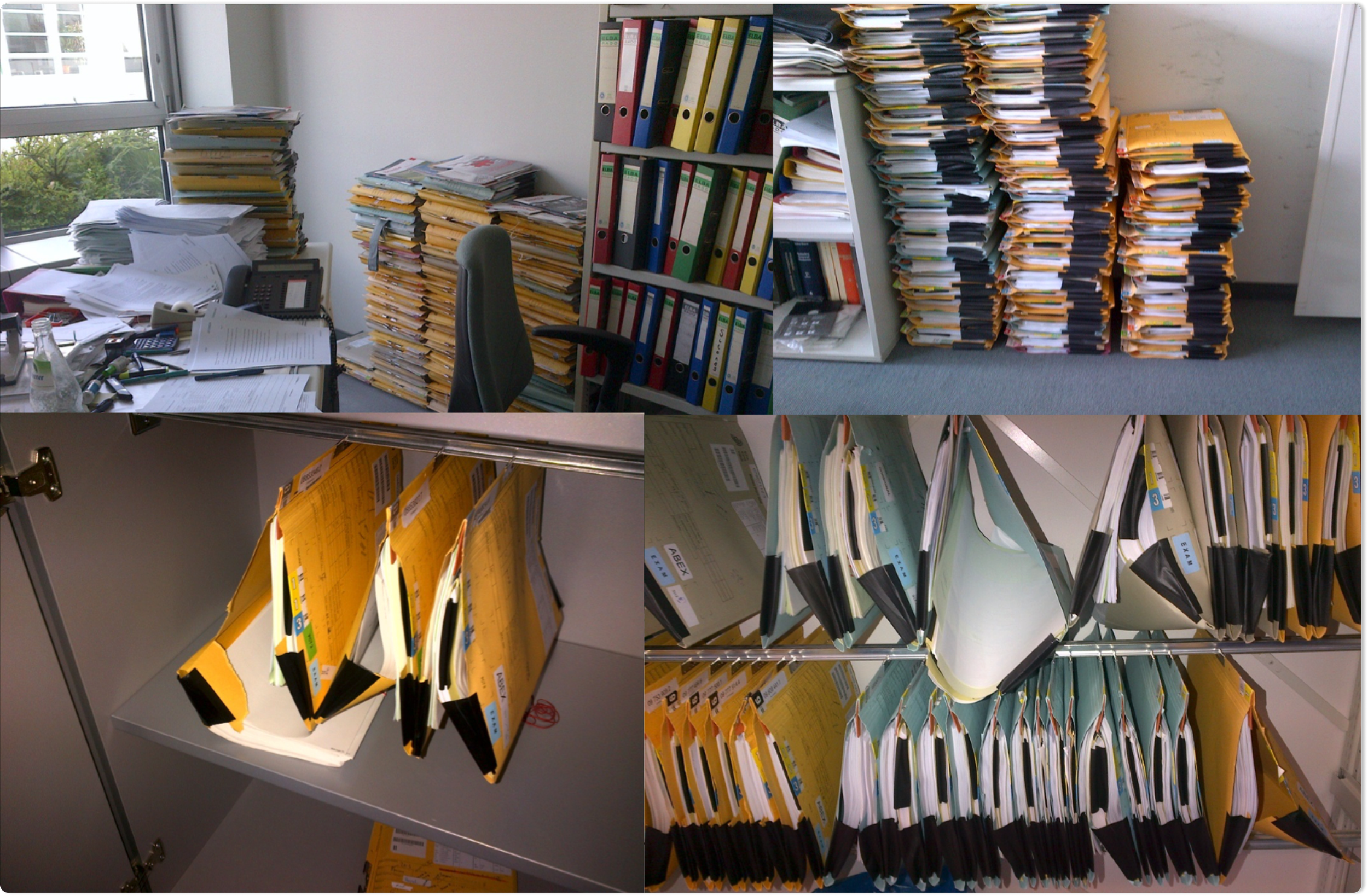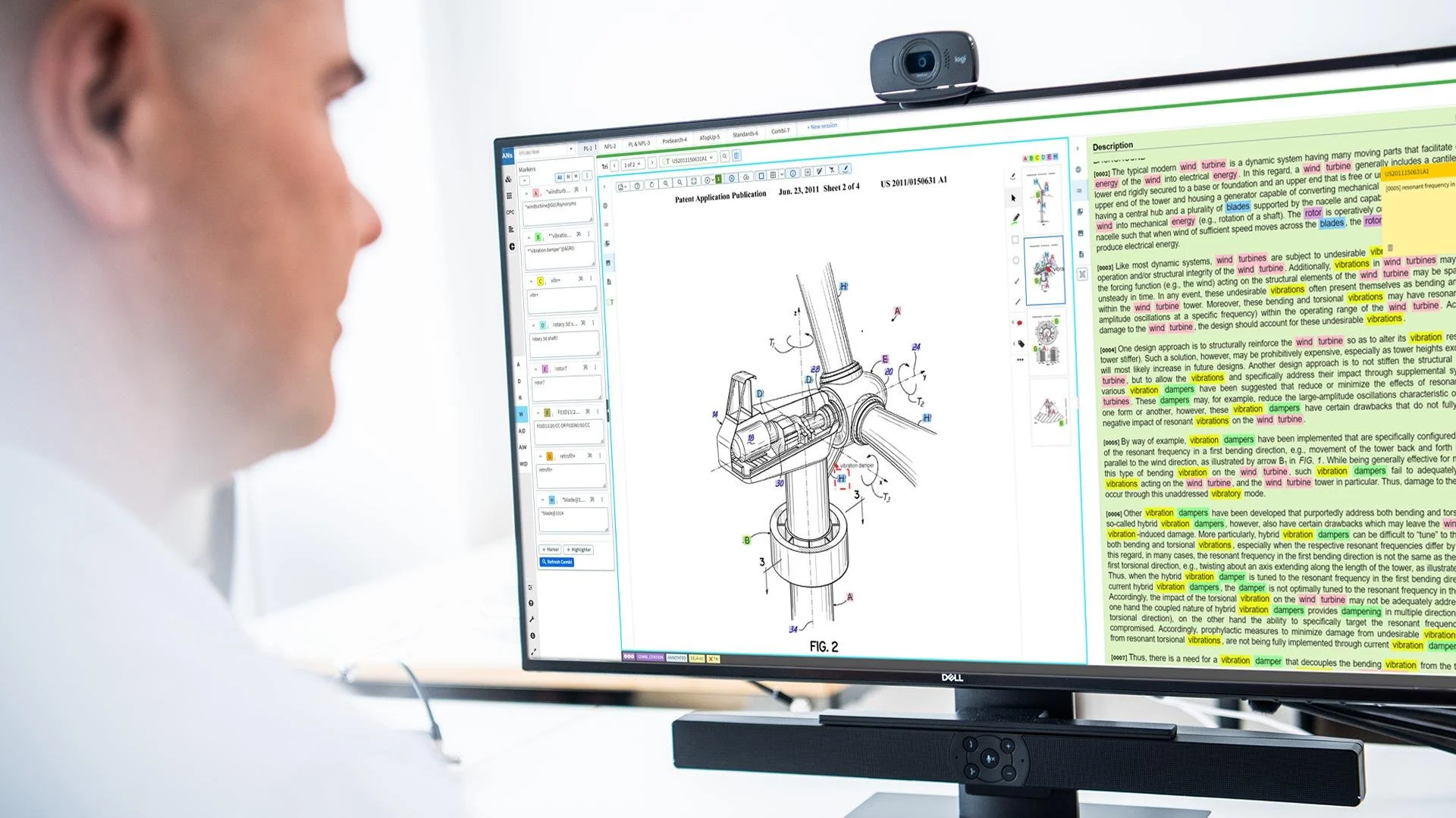European Patent Office
Bringing digital transformation to patent search and examination
Context & goal
Search and Examination are the two main steps that examiners go through in the process of evaluating a patent application.During Search, examiners analyse the application to find its mains aspects: inventions; claims; features; deficiencies, etc, and take notes. At the same time, they use these notes to build queries to help to search for other patents (prior art) that can disprove the novelties of the application that they have in hands.At the EPO I worked across different projects to improve workflows for all employees involved in the patent granting process.One of those projects was the redesign and upscale of Ansera (now Search), a software used to support examiners during this search phase.As a Product designer and User researcher, my goal was to bring digital annotation capabilities into Ansera, increasing efficiency of the patent search and examination process, while significantly reducing paper consumption.My role
I played a crucial role in the organisation's digital transformation efforts. My work focused on improving Ansera, EPO's patent search software, to increase efficiency and improve user experience for patent examiners across Europe.Engaged with users through different user research methods to gather insights and to learn about their specific needs across the different technical fields;Liaised with business and project team to define a roadmap;Delivered low and high fidelity designs and prototypes for usability testing and implementation;Supervised implementation bridging information between dev team and project team.
My work on the news
My work on the news:Estonia leads the way to a new search eraPowerful new search tool will help IPO maintain patent qualityLearning about users’ ways of working
For this project I started by learning the end to end patent granting process.For this, I ran user and contextual interviews to understand the different needs of examiners in different technical fields.I wanted to understand how examiners annotated patent applications on paper; how they used their annotations to support their examination process and their pain points and concerns.At the same time, I also deep dived on Ansera, the software to redesign, to understand any usability issues and what difficulties users faced with it.Data driven collaboration
With the data gathered from our user research, I led a series of workshops to align the project team and define our priorities. These sessions were essential for turning insights into actionable strategies.Key aspects included:Sharing research insights: presented findings to ensure the team understood user needs and pain points;Exploring technical specificities: discussed the unique requirements of the different technical fields to ensure adaptable solutions;Identifying pain points: analysed and prioritised the most pressing issues faced by patent examiners;Opportunity mapping: brainstormed potential solutions to address these challenges, focusing on both quick wins and long-term improvements;Defining priorities: collaborated with stakeholders to rank opportunities based on impact and feasibility.
Design iterations
With the knowledge gathered we created wireframes; designs and prototypes to test different features and different patterns for annotations.On the right, an example of one of the annotations features and how it evolved through design iterations:Horizontal contextual menu didn’t work for users as horizontal navigation was uncomfortable;Vertical contextual menu had too deep navigation levels;After iterating again with information architecture, we managed to keep the vertical menu with up to two levels of navigation, making it comfortable for users to find the needed information. We also paired it with a fixed navigation bar so users could use the same tool several times across the document, without having to previously select text.
Addressing ergonomic concerns for a digital transition
A key finding from user research was the general concern among patent examiners about the potential for Repetitive Strain Injury (RSI) associated with using standard computer peripherals.Users expressed that using a mouse and keyboard felt unnatural for examining and annotating patent applications, preferring the tactile experience of holding a pen and paper.I had already some insights on this from user interviews, and this time I visited offices of examiners, who had already adopted alternative hardware solutions, to gather insights on their effectiveness and user satisfaction.Simultaneously I researched and evaluated hardware options that could provide a more natural, pen-like experience for digital annotations while minimising RSI risks.Backed by this information I was able to voice these concerns to the business and the impact it could have on users health; productivity and ultimately, digital annotations adoption.For this I prepared a comprehensive presentation, outlining:User concerns and their potential impact on productivity and health;A range of hardware solutions, from stylus-enabled tablets to specialised ergonomic input devices;Pros and cons of each option, including cost implications and compatibility with existing systems.
Final notes
Ansera has now been adopted across the EPO, and it's now being used globally by examiners across other national offices.My work on the news.











